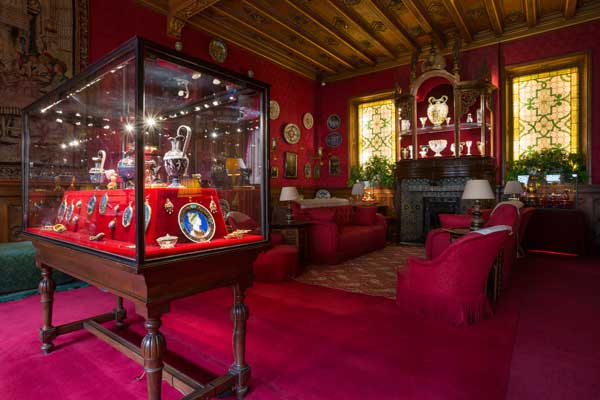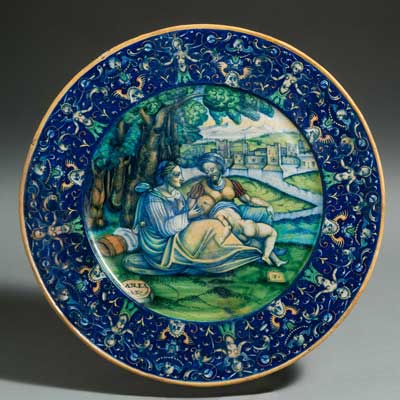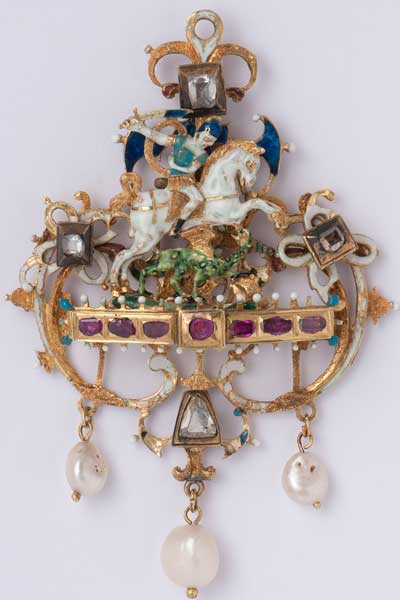
Renaissance jewels - authentic or forgery?
Curator Phillippa Plock explores why the Renaissance treasures of the Smoking Room are so special and why some may not be so original.
Researching the room over the last couple of years, I’ve been lucky to discover photographs of original plans in the archive at nearby Windmill Hill, which shows that the Smoking Room was originally two bedrooms in a much smaller wing. The bedroom accommodation was extended in 1885 and the Smoking Room was created in the 1890s to house Ferdinand de Rothschild’s collection of Renaissance treasures.

The Smoking Room is perhaps most famous as the home of the Waddesdon Bequest, now part of the British Museum. But what makes the room so special at Waddesdon today is that it is a snapshot of Rothschild ‘schatzkammer’ collecting. During the medieval and Renaissance period, this German word for treasure room, came to signify objects valued for their skill as well as for expensive materials – gold, silver and jewels. In the 19th century, it was fashionable to own such pieces. Many Rothschilds formed collections, also inspired by their forefather, Mayer Amschel, partly a dealer in coins, medals and jewels from Frankfurt’s Jewish ghetto.
Because the majority of objects that Ferdinand owned went to the British Museum in 1898, there was space to house treasures that belonged to different members of the family. Particularly of note is the fabulous Elizabethan portrait of Robert Dudley from the English side of the family, and jewels from the French collection of Betty de Rothschild, the beautiful and clever 19th-century socialite. In 2016, I published an article about these jewels in The Journal of the History of Collections.

What also makes the room so special is the stories of the 19th-century dealers, goldsmiths and forgers who responded to the fashion for schatzkammer collections. In the Smoking Room we have items owned by Frédéric Spitzer, a notorious forger and dealer in late 19th-century Paris, such as this unusual maiolica plate. In undertaking my research, I discovered that contrary to our previous understanding, Ferdinand de Rothschild actually purchased a 16th-century jewel from Spitzer, only later realizing it was a composite piece – part original, part 19th-century in date.
As well as uncovering all the archival stories about our objects, one of the best parts of my job is looking at treasures close-up – and this talk was a great excuse to get out of the case the candidate I think most fits Ferdinand’s composite jewel.

Read more about the composite jewel >
My article on Betty de Rothschild’s jewels >
Check out upcoming What’s Special talks >
By Dr Phillippa Plock, Curator (Web Content)




